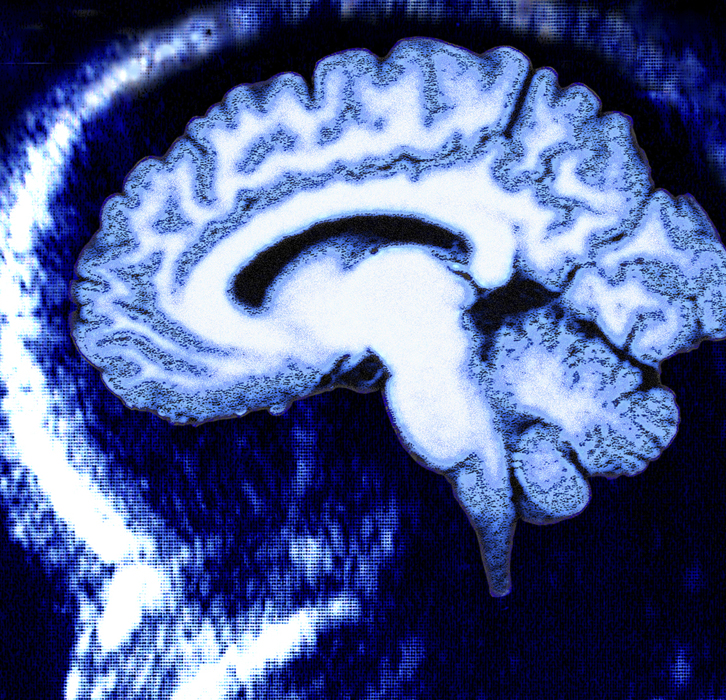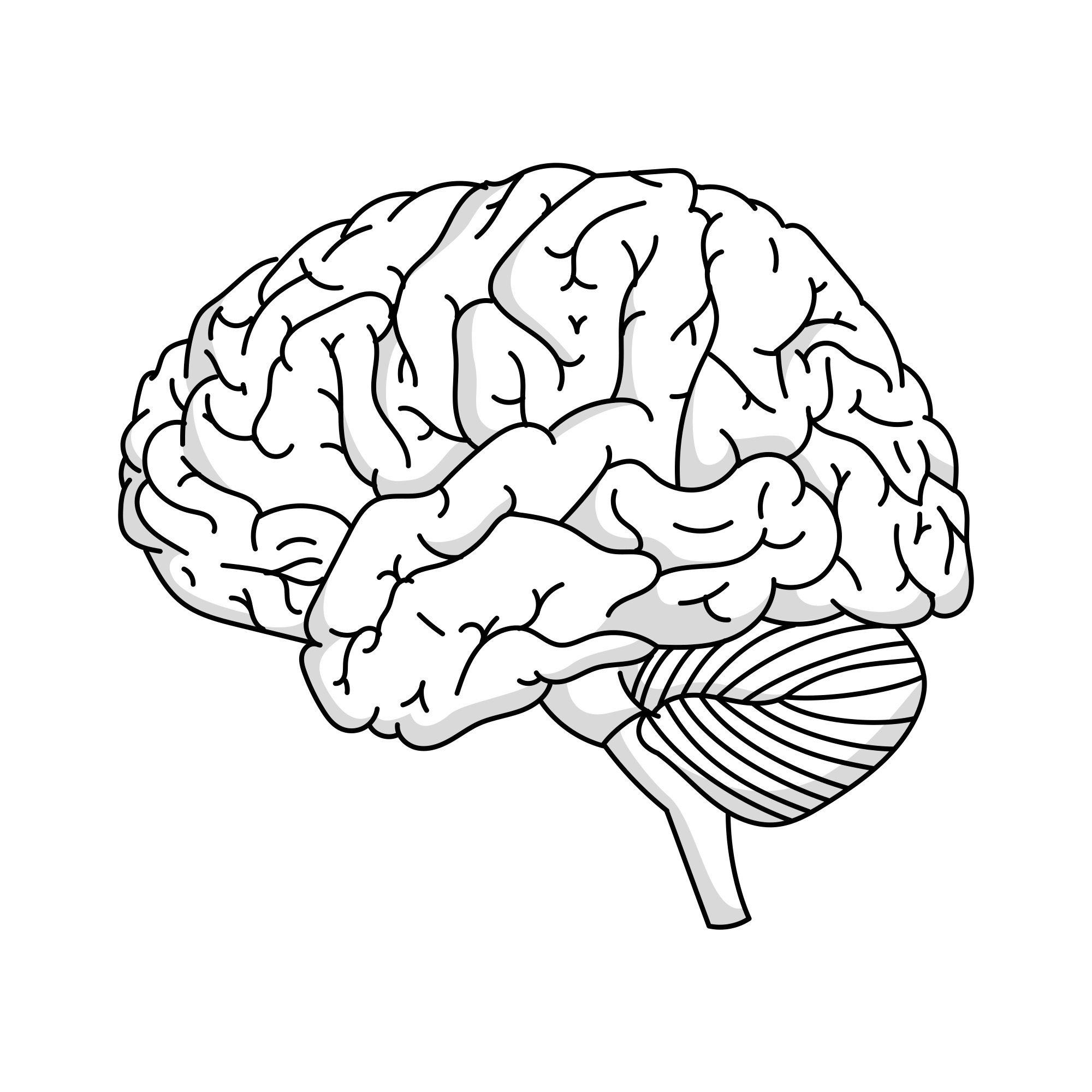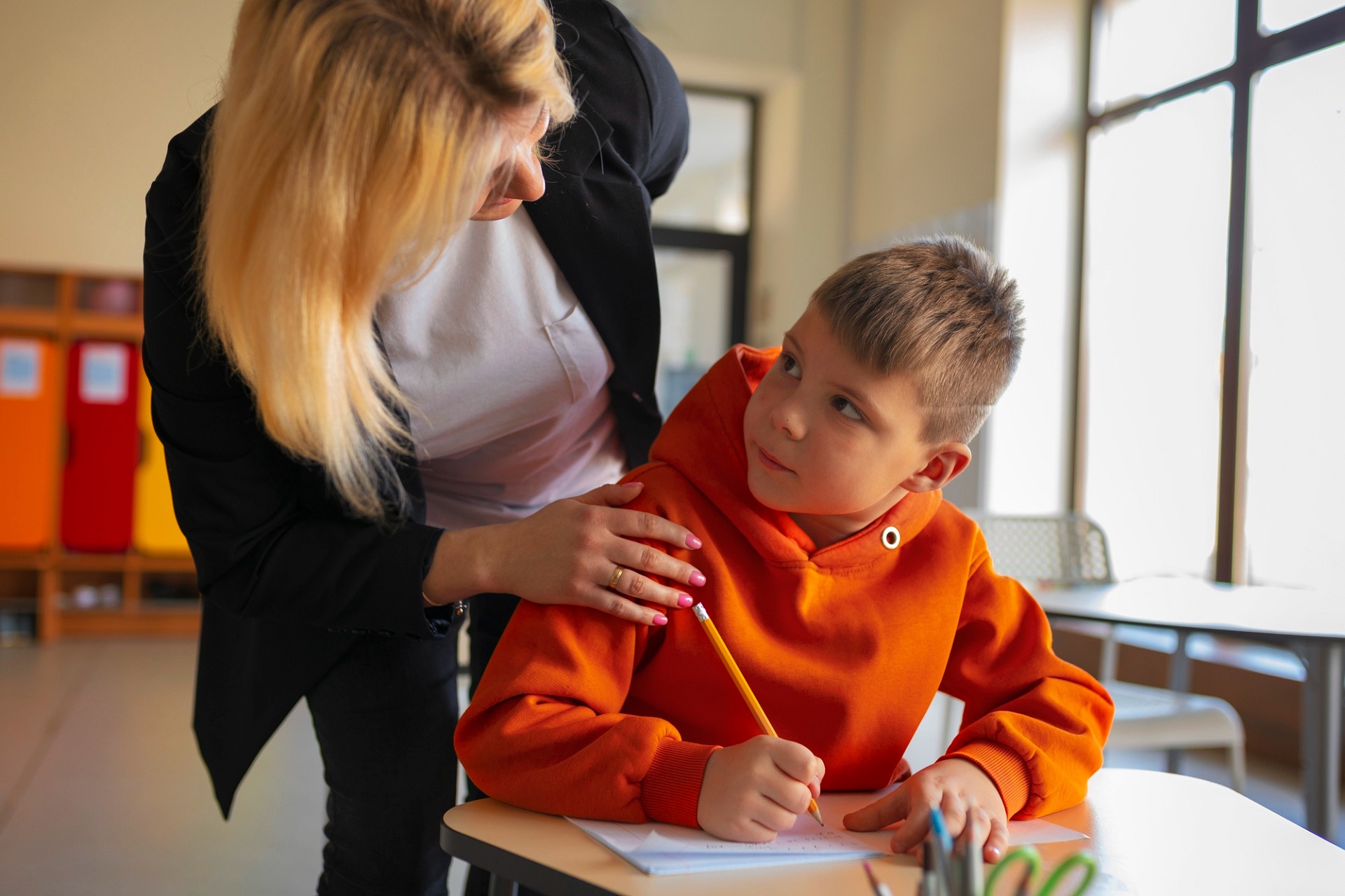This approach to therapy of maltreated children is being developed by Dr. Bruce Perry, a leading expert in early childhood trauma. Dr. Perry and the staff at Child Trauma Academy in Texas have created a “developmentally sensitive, neurobiologically informed approach to clinical work.” This approach is based on what Dr. Perry knows about brain development, which includes these brain basics:
Brains develop from the “lower” parts that mediate simple functions like breathing, heart rate and body temperature to the “higher” parts that mediate complex functions like language and abstract thinking.
The majority of brain organization takes place in the first four years of life.
Because most of the brain’s core neural networks and primary associations develop at such a young age, early developmental trauma and neglect have a disproportionate influence on the brain’s organization and functioning.
In addition to early childhood trauma, children exposed to intrauterine insults (drug exposure or even maternal stress) alters their brain chemistry and brain structure.
The NMT approach starts with a core assessment, which includes a review of the child’s relational history, an assessment of the child’s current functioning and specific recommendations to develop a “map” of a unique sequence of developmentally appropriate interventions that can help the child get back on a more normal brain development tract. This approach often involves patterned, repetitive somatosensory activities that help develop the child’s capacity for self-regulation before moving on to therapies that will help with more relational-related problems and then developmentally further into more cognitive-behavioral based approaches.
Dr. Perry stresses that NMT is not a specific therapeutic technique or intervention but an approach to structuring the application of interventions in a way that will truly help meet the needs of the child. The Child Trauma Academy is currently training clinicians to be NMT certified and use this biologically informed, developmentally sensitive approach to heal maltreated children.
What types of interventions are often used in conjunction with the NMT approach?
- Music
- Movement
- Yoga
- Therapeutic massage
- Reiki
- EMDR
- Drumming
- Equine or canine interactions
- Art therapy
- Drama therapy
The NMT approach focuses on the need for consistent, repetitive sensory input and movement therapies, as well as the need for a stable relational environment with positive, healthy adults providing a safe, healing environment. The research and theoretical approach of NMT may be helpful in explaining why many are finding success with the Neuroscience interventions (such as neurofeedback, sensory integration and neurodevelopmental reorganization), which incorporate repetitive movement, sensory input, breathing and other techniques found useful for helping children’s brains grow and develop.
Links:
Child Trauma Academy
The Neurosequential Model of Therapeutics
Struggling Teens Blog about NMT Training
Unveiling the Neurosequential Model of Therapeutics: A Breakthrough in Child Counseling
Imagine a world where children who have experienced trauma can receive specialized, neuroscience-based treatment that targets their unique needs and promotes healing. This is the reality that the Neurosequential Model of Therapeutics (NMT) offers. Developed by Dr. Bruce Perry and his team at the Child Trauma Academy, NMT has revolutionized the way mental health professionals approach trauma treatment for children. In this blog post, you’ll discover the ins and outs of NMT, its origins, and how it’s being used to transform the lives of children who have faced adversity.
Key Takeaways
- The Neurosequential Model of Therapeutics (NMT) is a comprehensive framework for understanding and addressing the impact of trauma on child development.
- NMT integrates principles from neuroscience, developmental psychology, and trauma-informed care to create individualized treatment plans based on brain mapping assessments.
- It provides mental health professionals with resources, networking opportunities, increased credibility in therapeutic practice & real world success stories that highlight its positive impacts.
Understanding the Neurosequential Model of Therapeutics (NMT)
The Neurosequential Model of Therapeutics (NMT) is a groundbreaking approach to trauma treatment that focuses on understanding a child’s brain development and function. Instead of promoting a specific therapeutic technique, NMT provides a framework for:
- Assessing a child
- Identifying primary issues
- Recognizing key strengths
- Applying evidence-based interventions (educational, enrichment, and therapeutic)
This framework integrates core principles designed to assist families, educators, therapists, and other professionals in meeting the child’s needs, ultimately contributing to child welfare.
Designed for foster or adopted children and teens who demonstrate behavioral difficulties, as well as those who have experienced extreme and/or chronic trauma, NMT is particularly suitable for at-risk children. The foundation of the NMT approach is rooted in neuroscience, addressing the consequences of childhood trauma on a child’s brain development.
The Origins of NMT
The Neurosequential Model of Therapeutics was created by Dr. Bruce Perry, a renowned psychiatrist and senior fellow of the Child Trauma Academy. With over 30 years of research and experience in the fields of psychiatry, neuroscience, children’s mental health, and the neuroscience of trauma, Dr. Perry’s expertise has been an invaluable contribution to the development of NMT.
Dr. Perry developed NMT with the goal of offering a more efficient, biologically respectful approach for treating children with intricate trauma backgrounds. Drawing upon principles of brain organization, development, and function, developmental sensitivity, and a neurobiology-informed approach to clinical problem-solving, NMT provides a comprehensive framework for understanding and treating clients with trauma histories.
Integrating Core Principles
NMT integrates principles from neuroscience, developmental psychology, and trauma-informed care to form a comprehensive approach to therapy for children who have experienced trauma. By incorporating neuroscience into the model, therapists can better understand the impact of trauma on a child’s brain development and functioning, allowing them to customize interventions and support to meet the specific needs of their clients.
Developmental psychology serves as a foundational framework for NMT, providing insight into the stages of human development and how experiences during these stages can shape brain development and functioning. In harmony with trauma-informed care, NMT acknowledges the effect of trauma on a child’s growing body and brain, highlighting the necessity of consistent, repetitive sensory input, movement therapies, and a steady relational environment.
Brain-mapping assessments are also used to illuminate the child’s particular requirements for treatment and intervention.
The Role of Brain Mapping in NMT
Brain mapping significantly contributes to NMT by identifying the brain regions affected by trauma, thereby guiding targeted interventions. Through this specialized assessment tool, practitioners can pinpoint areas in the brain that may require support or intervention.
For the creation of individualized treatment plans, an accurate brain map is vital as it offers critical data on past experiences, traumas, and developmental milestones. This data, gathered through brain maps, is used to identify areas of the brain that may have been impacted, assisting practitioners in selecting the most appropriate interventions at the appropriate time.
Assessing the Child’s History
Within NMT, the evaluation of a child’s history is significantly important as it supports the organization of the child’s past experiences and present functioning. This enables clinicians to gain an understanding of the child’s developmental progress, recognize areas of strength and areas of need, and select suitable therapeutic interventions. Furthermore, assessing the child’s relational history provides perspectives on the child’s past experiences and relationships, which can guide the therapeutic approach.
The child’s history plays a pivotal role in developing an accurate brain map in NMT, furnishing necessary data about past experiences, traumas, and developmental milestones. This data is used to identify areas of the brain that may have been impacted and assists the NMT practitioner in selecting the most suitable interventions for the given situation.
Structure Assessment and Clinical Problem Solving
In clinical decision-making, the brain map derived from NMT assessment is used to detect brain regions needing the most intervention and to identify areas with functional or developmental problems. This information assists practitioners in selecting the most appropriate interventions at the appropriate time and in developing a treatment plan that targets specific areas of the brain.
Structure assessment in NMT is integral in providing a comprehensive understanding of the child’s history and current functioning, thus aiding in the identification of specific areas of concern. This information is then used to develop targeted interventions and recommendations for the child’s treatment.
Implementing NMT in Practice
The implementation of NMT involves a structured assessment process, personalized interventions, and cooperation with families and educators. The NMT assessment evaluates the child’s developmental history, brain function, and current symptoms to inform treatment. Based on the assessment, interventions are customized to address the specific needs of the child, targeting underdeveloped or wounded areas of the brain.
Families and educators play a vital role in supporting the child’s healing process and reinforcing therapeutic gains. By involving these key stakeholders in the NMT process, professionals can ensure that the child’s needs are met in a comprehensive and holistic manner, fostering a successful therapeutic process.
NMT Assessment
Accounting for the child’s developmental history, brain function, and current symptoms, the NMT assessment provides a comprehensive evaluation to guide treatment. The assessment includes:
- Thorough assessment of early developmental history
- Review of adverse experiences and relational health
- Assessment of functional strengths and deficits using the NMT Metric or Brain Map
- Construction of a detailed developmental history from early childhood onwards
These methods are used to assess a child’s history for NMT.
The NMT Metric Report, which includes a ‘Functional Brain Map’, is generated from the assessment and is used to evaluate the functioning of different brain areas. By analyzing the individual’s symptoms, behaviors, and functional impairments, clinicians can pinpoint specific areas of the brain that may be underdeveloped or affected by injury. These identified areas can then be targeted with tailored interventions to promote healing and development.
Tailored Interventions
NMT interventions are custom-made to focus on any underdeveloped or damaged areas of the brain to optimally meet the child’s needs. Some techniques used in NMT to tailor interventions to the individual child’s needs include:
- Multi-dimensional assessment
- Understanding the child’s needs and deficits
- Determining appropriate interventions
- Utilizing therapeutic instrumental music performance
These techniques help ensure that interventions are specifically designed to address the unique needs of each child.
Various techniques commonly employed in NMT include:
- Rhythmic Auditory Stimulation (RAS)
- Melodic Intonation Therapy (MIT)
- Patterned Sensory Enhancement (PSE)
- Musical Speech Stimulation
- Interventions from allied fields such as occupational therapy
These techniques provide tailored interventions that address the specific needs of the child. The efficacy of these interventions is evaluated through randomized controlled trials, which measure objectively measured outcomes and assess the impact of the interventions on professional practice and healthcare outcomes.
Involving Families and Educators
Within the NMT process, families and educators hold a central role, offering support and executing evidence-based assessments of the child’s needs. Strategies recommended for engaging families in the NMT process include fostering trust and cultivating relationships, in addition to family involvement in therapy sessions and treatment planning.
Educators can be effectively incorporated into a child’s NMT plan by:
- Working in tandem with the child’s NMT therapist
- Utilizing trauma-informed practices
- Applying recommended strategies and interventions
- Sustaining regular communication with the therapist
Resources available to assist families and educators in understanding NMT include websites such as the Neurosequential Network and the Adoption Council, which offer education and training on NMT, as well as courses and training programs provided by New Mexico Tech and NMTSA.
NMT Training and Certification
NMT training and certification equip mental health professionals with the necessary knowledge and skills for the effective implementation of the model in their practices. Obtaining NMT certification equips mental health professionals with the requisite knowledge and aptitude to proficiently apply the Neurosequential Model of Therapeutics (NMT) in their practice, offering numerous benefits such as access to resources, networking opportunities, and increased credibility in the field.
The procedure for obtaining NMT training certification generally consists of completing a one-year, self-paced course, passing a written and practical exam, and complying with continuing education requirements. No prerequisites are required for enrolling in NMT training, and successful completion of the training is expected to result in the acquisition of the NMT designation and certificate.
Training Requirements
Essential workshops for NMT training encompass the NMT Training Institute workshop, Clinical Practice workshop, Pre-requisite training series, and NMT Fellowship Training. Online courses for NMT training can be accessed on the Neurosequential website and the NMT Academy website, with the duration of the courses ranging from several weeks to several months.
Clinical supervision in NMT training is typically conducted by a qualified professional in a related field or an NMT Fellow, with the aim of providing relationship-based education and support for professional development. There are no prerequisites for attending NMT training workshops, making it accessible to a wide range of mental health professionals.
Benefits of Certification
Certification confers multiple benefits to mental health professionals, including access to resources, networking opportunities, and enhanced credibility in the field. Certified NMT professionals have access to training opportunities, continuing education programs, specialized rehabilitation service training, NMT assessment and consultation services, as well as the Neurosequential Model of Therapeutics (NMT) treatment approach.
Networking opportunities are facilitated by NMT certification through monthly study groups led by NMT Mentors. These study groups offer certified professionals the opportunity to connect, share knowledge, and cultivate relationships within the NMT community.
Furthermore, NMT certification enhances credibility in the field of therapeutic practice by:
- Furnishing clinicians with a neurobiology-informed and developmentally sensitive approach to clinical problem-solving
- Helping them select from existing interventions
- Providing a trauma-informed, evidence-based framework for comprehending and addressing clients’ needs.
Real-World Success Stories
Real-life success stories showcase the transformative influence of NMT on children who have undergone trauma. Through NMT, children have been able to overcome adverse experiences by providing targeted interventions that promote healing and growth.
NMT has been found to have a transformative effect on children who have experienced trauma, as evidenced by various real-world success stories. This is achieved by promoting resilience and the ability to thrive despite their challenging histories.
Overcoming Adverse Experiences
NMT aids children in surmounting adverse experiences by offering targeted interventions that foster healing and growth. NMT has been demonstrated to be effective in addressing a range of adverse experiences, including self harm, physical, emotional, and sexual abuse, physical and emotional neglect, household dysfunction, community violence, and other potentially traumatic events occurring during childhood.
By emphasizing the importance of positive, supportive relationships and nurturing experiences, NMT provides a developmentally sensitive and neurobiology-informed approach to healing and growth in children after adverse experiences, including interpersonal trauma. This helps children to stabilize, heal interpersonal trauma, and grow, ultimately allowing them to overcome the challenges posed by their traumatic histories.
Promoting Resilience and Growth
NMT enables children to build resilience and thrive in spite of their challenging pasts. The neurosequential approach highlights the significance of:
- supportive and nurturing relationships
- experiences that provide a developmentally sensitive approach to meeting the complex needs of children
- helping them to stabilize, heal, and grow.
Resilience in the context of NMT is defined as the capacity for individuals to adjust and bounce back from difficult experiences or trauma with the help of predictable, consistent, and supportive experiences of moderate challenge. By fostering resilience in children, NMT provides them with the tools they need to overcome adversity and achieve their full potential in life.
Summary
In conclusion, the Neurosequential Model of Therapeutics (NMT) offers a groundbreaking, neuroscience-based approach to trauma treatment for children. By understanding a child’s unique brain development and function, mental health professionals can provide targeted interventions that address the specific needs of each child, promoting healing, resilience, and growth. With the support of families, educators, and trained professionals, NMT has the potential to transform the lives of countless children who have experienced trauma, giving them the opportunity to overcome adversity and thrive.





